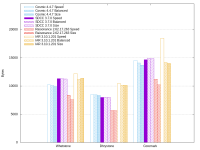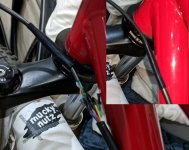The TSDZ2 with the burnt connector is up and running. It got a well deserved service as well :thumb:
Therefore, I had the chance to quickly test the changes I have been working on. All seems fine. To be honest I am very excited to get it out for you all to test for yourselves!

There will always be room for some improvements or bug fixes. Especially now that the entire firmware is getting optimized at the same time new functions are implemented.
Note that I am prioritizing making the current functions and features work and will later try to add the GREAT suggestions from all of you. When we come to a point where everything works we can make this version official and then work on a new version with new additions.
Changelog:
------------------------------------------------------------------------------------------------
- Fixed bug that did not set the screen brightness until user toggles lights
- Improved screen brightness setup, now the user immediately sees the screen brightness during setup
- Fixed bug that did not show imperial units in the new Wheel Speed sub menu in the odometer field
- Implemented a safer cruise/walk assist
- Developed a better Main Screen Setup with more custom settings
- It is now possible to set what to display in the temperature field, such as pedal cadence
- Removed the quick-change-temperature-field
- Optimized UART communication
- Made overall improvements: faster and takes up less space
- Changed the motor acceleration to amps per second, more intuitive
- Implemented an enable/disable throttle toggle. This maybe makes two hex versions for the motor controller (throttle and no-throttle) unnecessary as user can toggle the function on or off via firmware. But this is maybe unsafe to do and it may still be better with two separate versions.
- Some other smaller fixes
------------------------------------------------------------------------------------------------
The pull request is submitted and as always, I look forward to feedback from Casainho and of course from all users!
In this new update the firmware has been optimized and it is very important to RESET to default values OR go through the entire Configuration Menu and CONFIRM that everything is set to correct values so that it works as expected! Sorry if this causes any inconvenience!
Updated wiki:
https://github.com/OpenSource-EBike-firmware/TSDZ2_wiki/wiki/Features-and-configurations-for-version-0.18.X-(beta)





